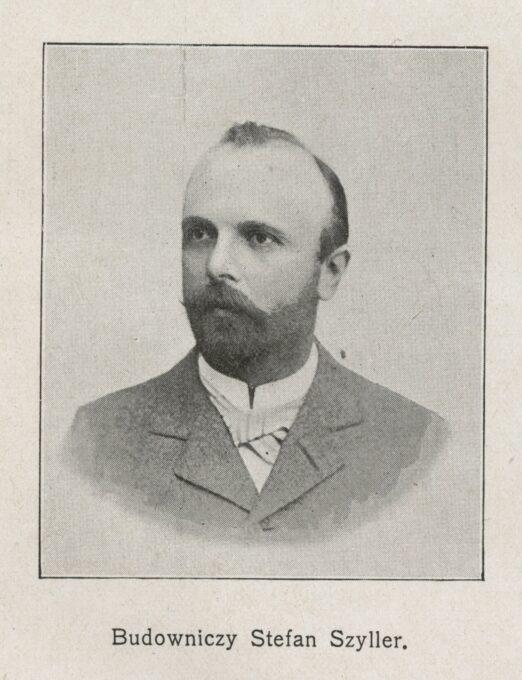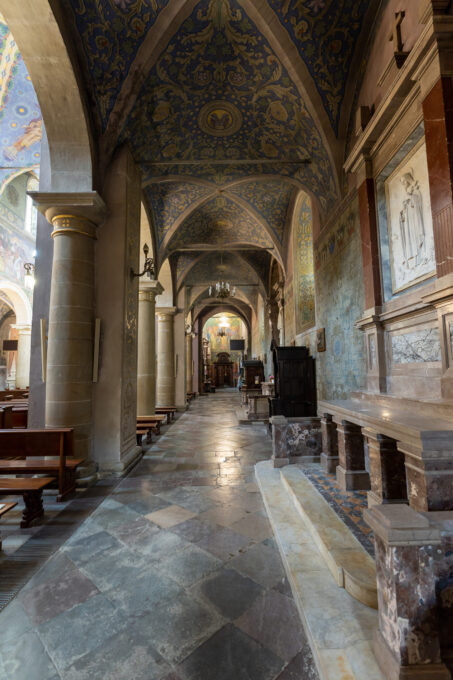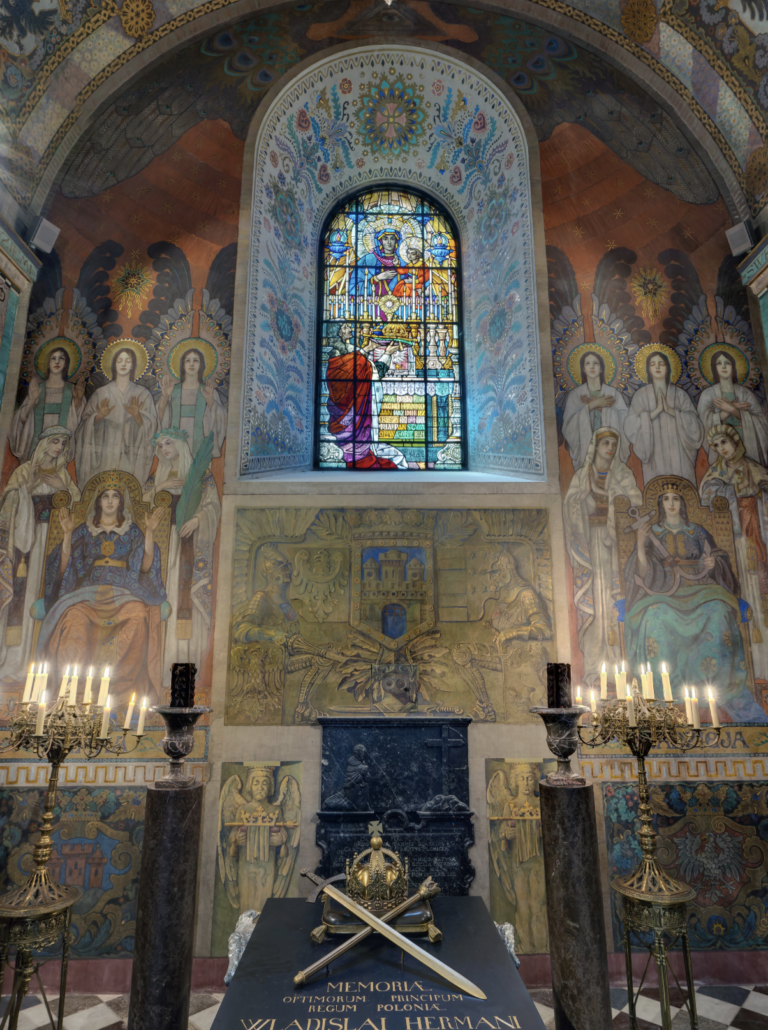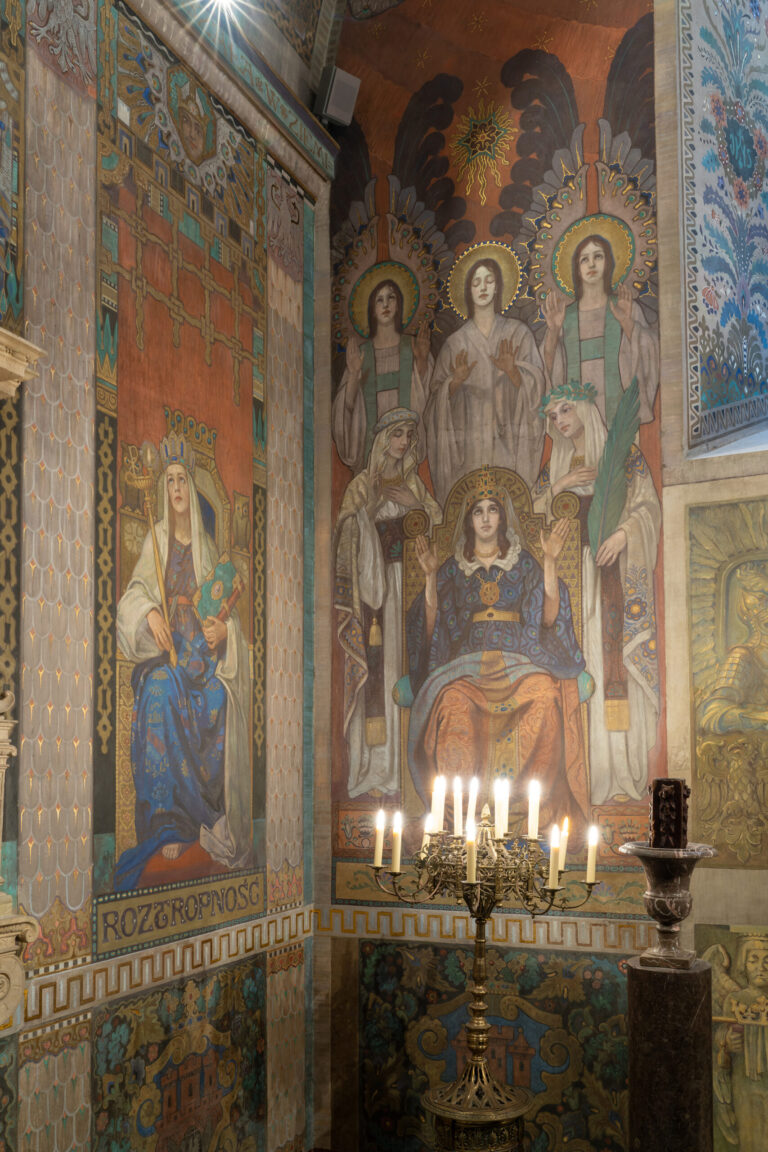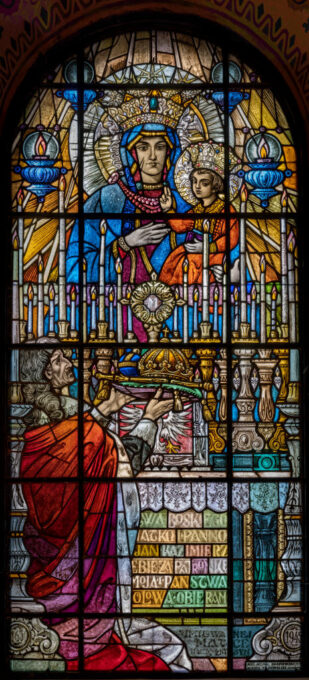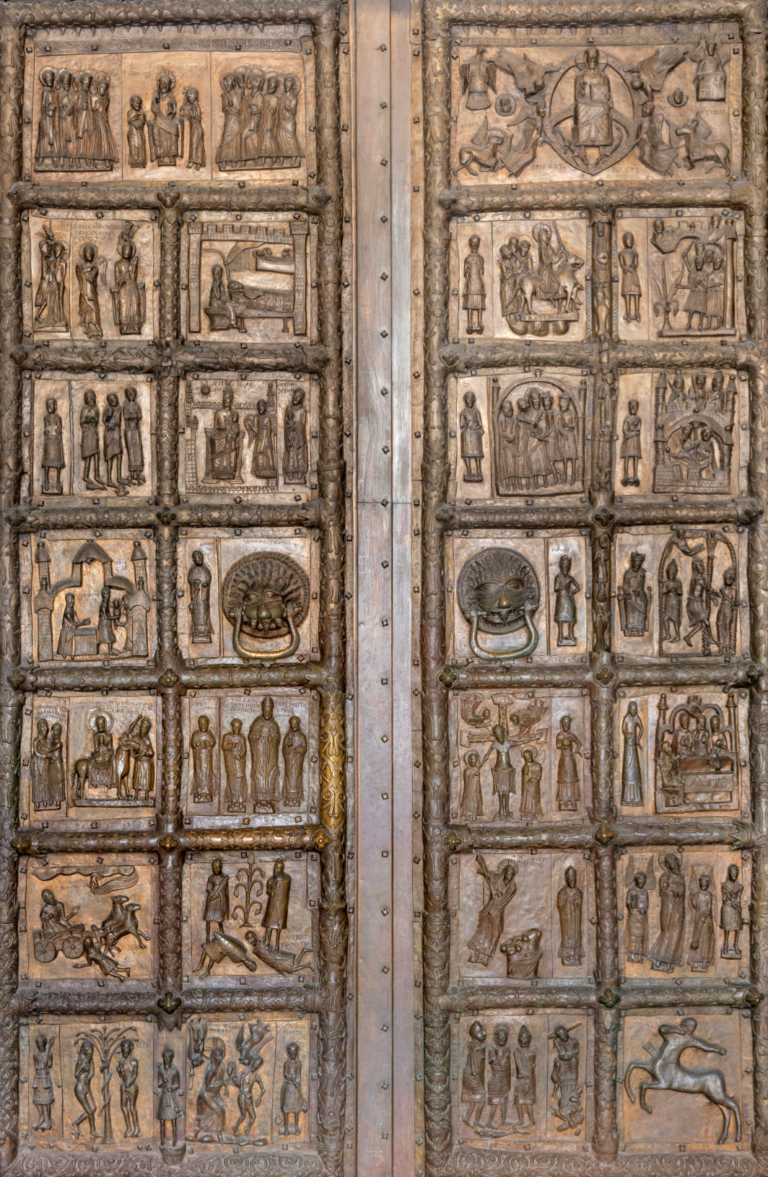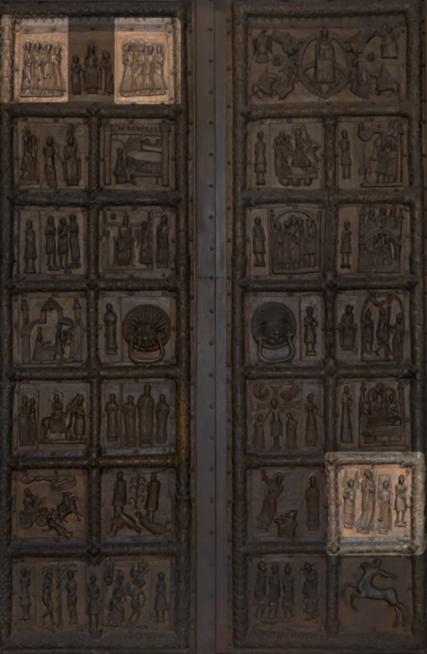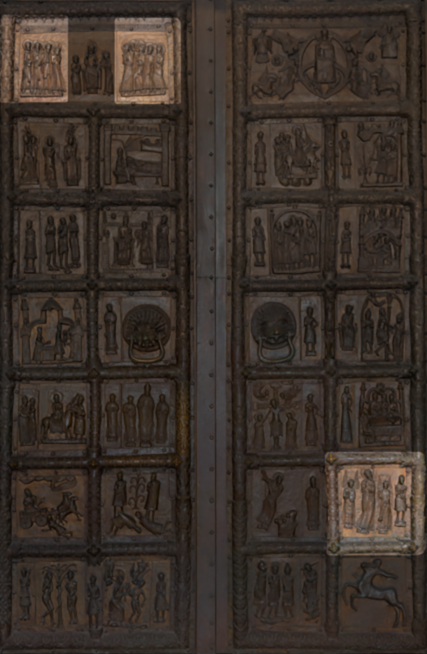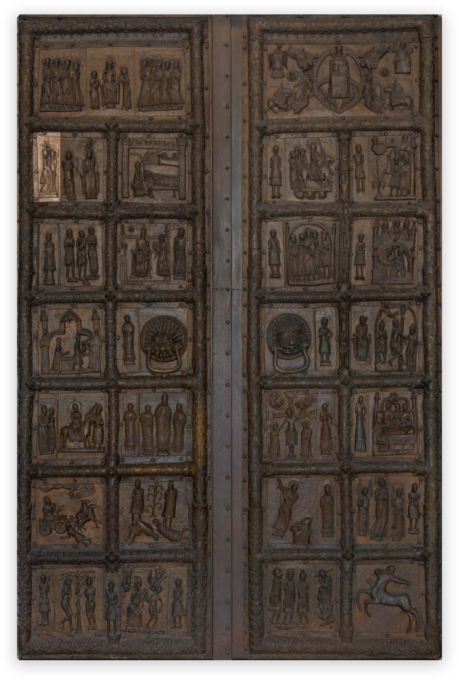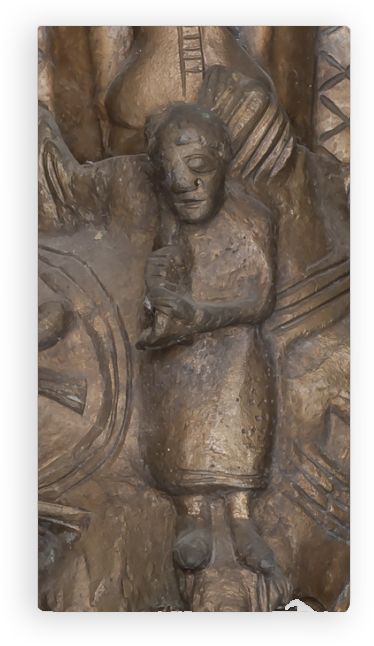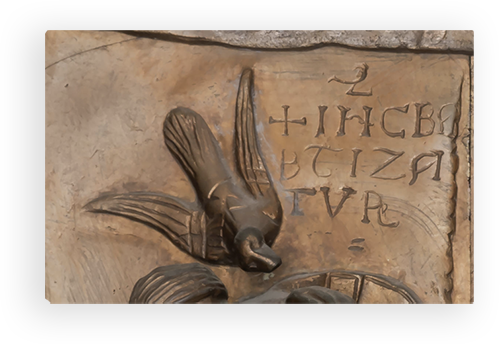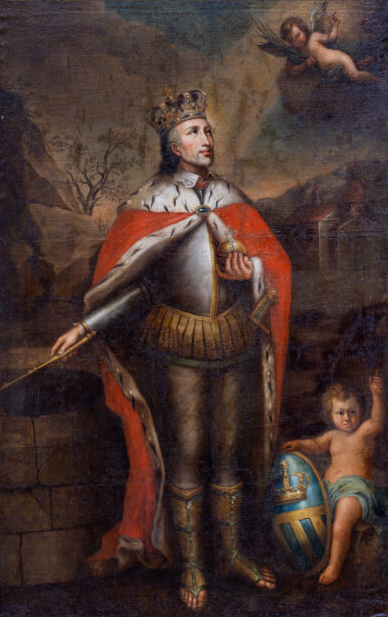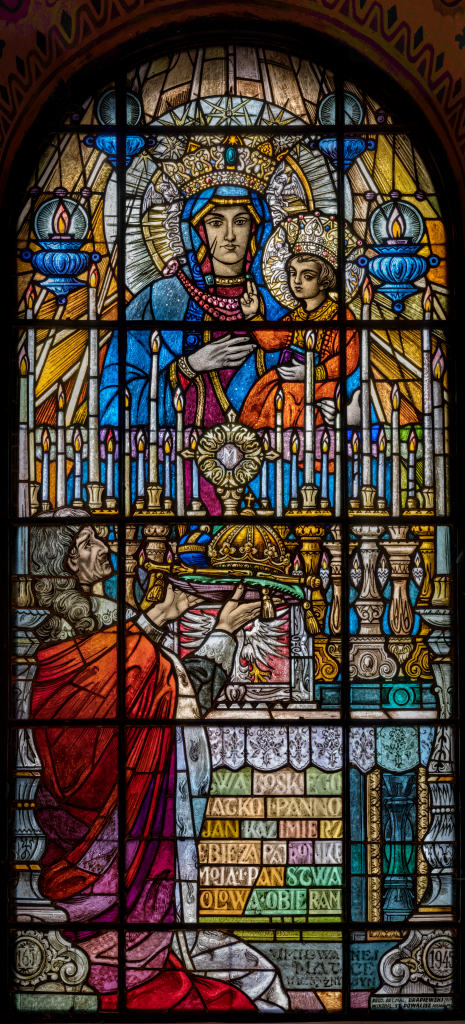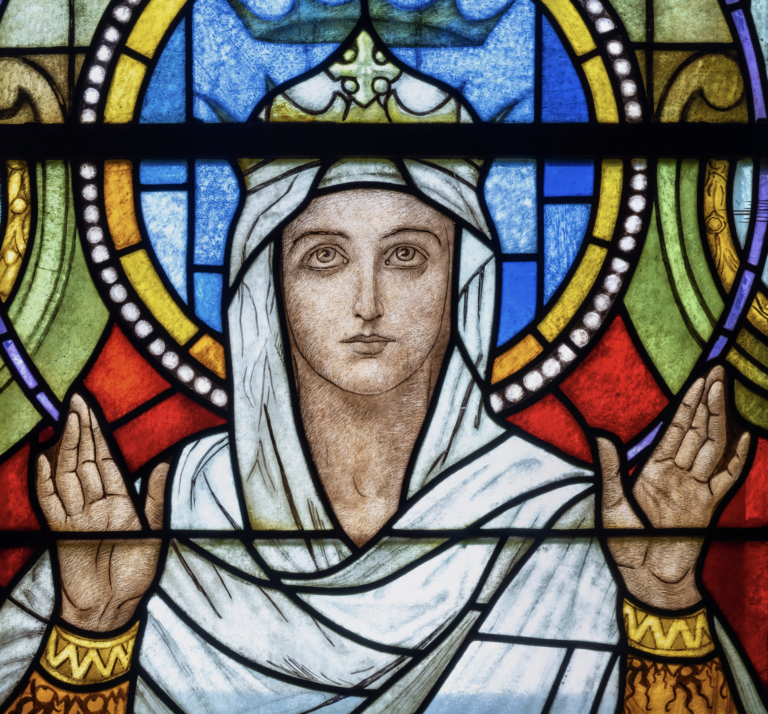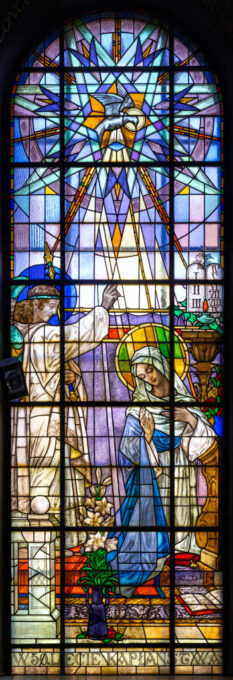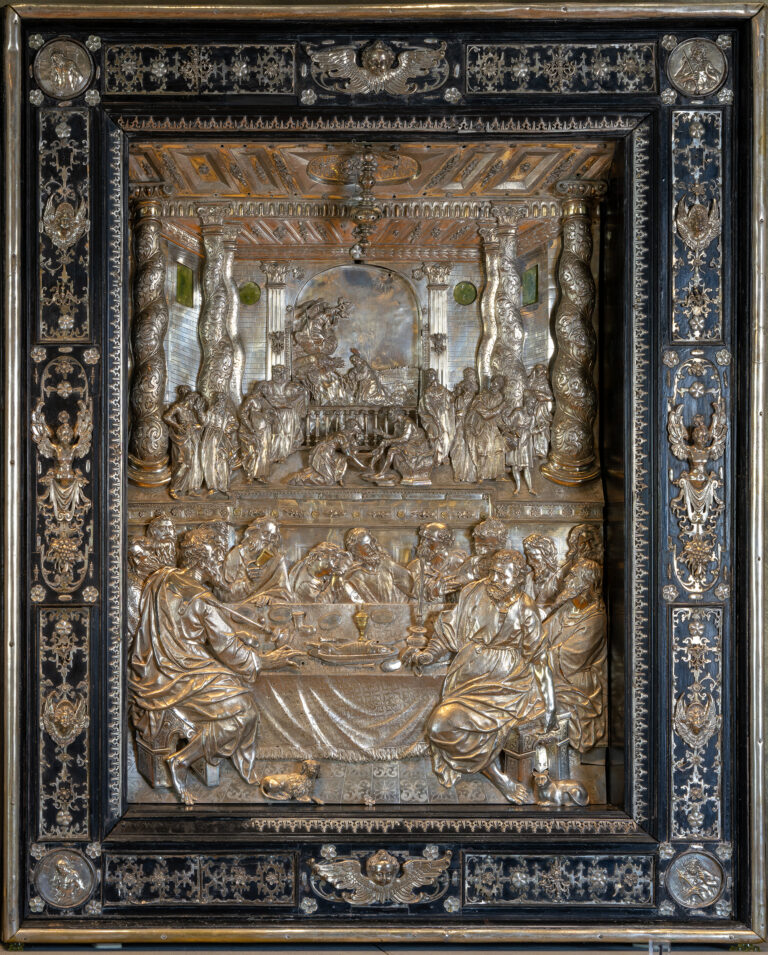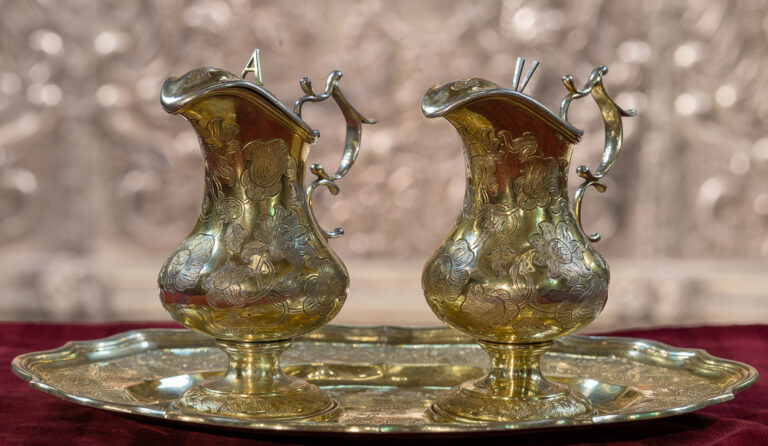Cathedral Basilica of the Assumption of the Blessed Virgin Mary in Płock
explore
Introduction
Mother of
the churches
of Mazovia
The Cathedral Basilica of Płock is situated on the picturesque 50-metre high Wzgórze Tumskie (Cathedral Hill). It was founded around 900 years ago. This medieval church witnessed the most important events happening in Mazovia and together with the abbey and the diocesan museum, it was awarded the Historical Monument status.
Cathedral Basilica is one of the oldest and the largest in the country, at the same time being the largest Renaissance cathedral North West of the Alps. Other Polish churches were based on it too. Inside, we can find a copy of the bronze Płock Doors which are a unique example of Romanesque art in this part of Europe. Also, the polychrome with coats of arms of all Płock bishops amazes with its beauty. Under the Northern tower, in the Royal Chapel, the rules of Poland are buried in Classicist sarcophagus: Władysław I Herman and Bolesław III Krzywousty. In the crypt Konrad Mazowiecki and other dukes have their place of rest. Unique works of art which have been gathered in the treasury complete the image of a real pearl amongst Polish historical monuments.
 gigapanorama
gigapanorama
History
The largest
Piast necropolis
of the Polish rulers
The Płock Cathedral has guarded faith and history for nine centuries.
Over the centuries, the Cathedral changed its appearance, but it was invariably the most important church of Mazovia. In 1075, when Płock diocese was established, the first wooden cathedral church of the Assumption of the Blessed Virgin Mary was built. During the reign of Bolesław III Krzywousty, the then bishop Alexander of Malonne, started the construction of the country’s largest brick, three-nave, Romanesque Basilica.
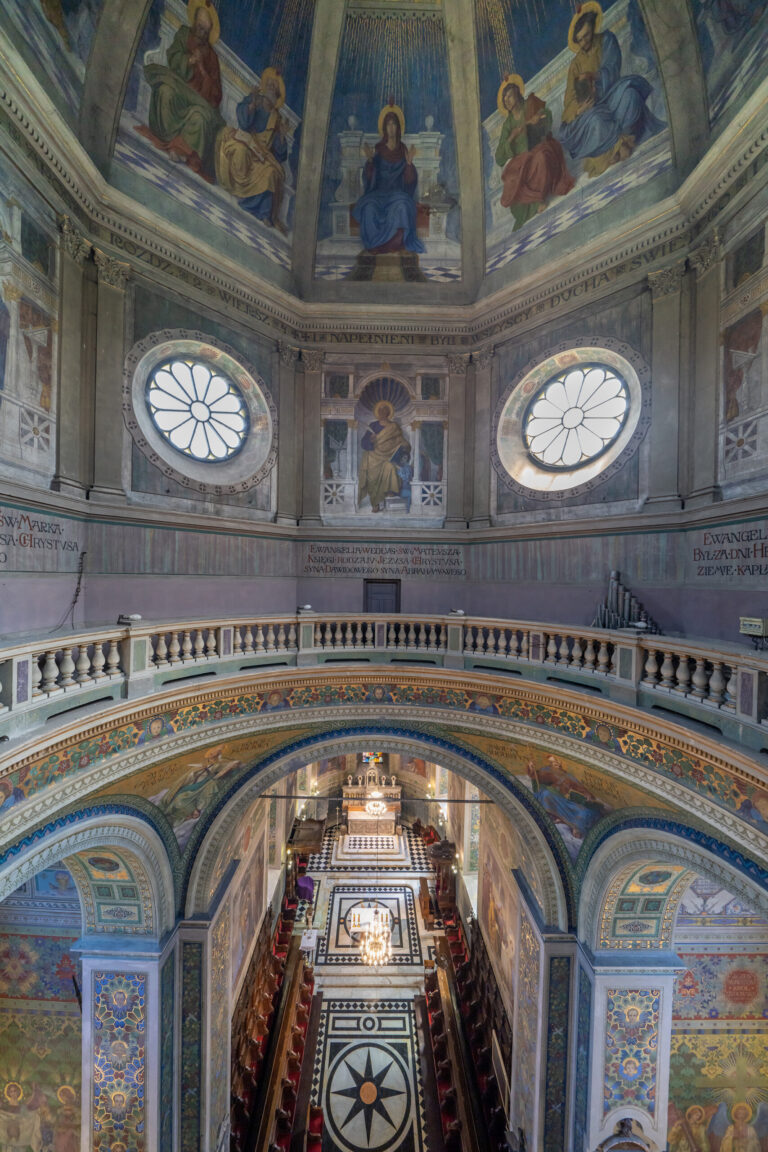
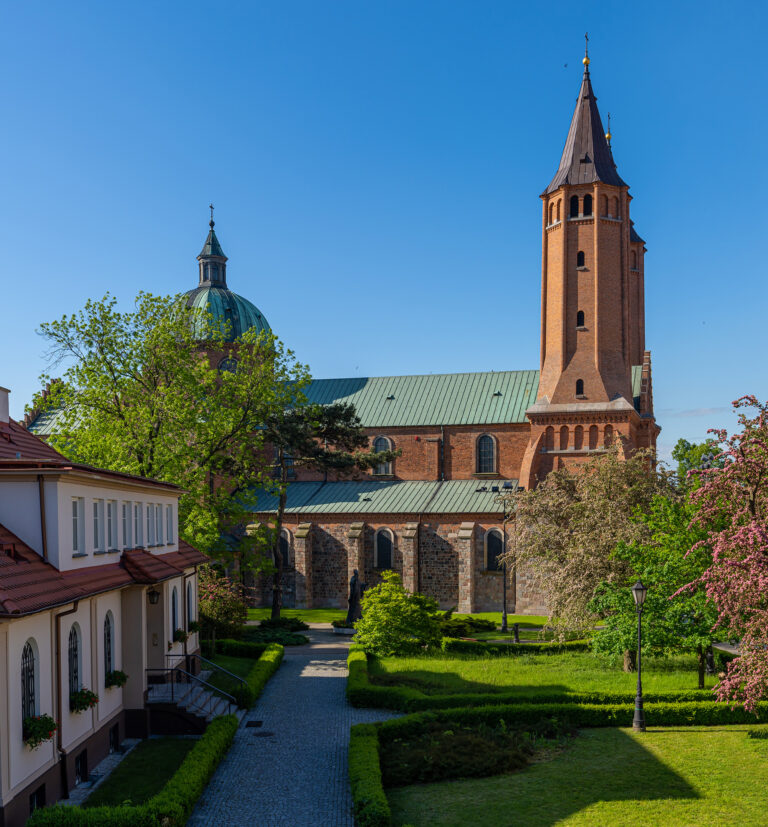

In the 16th century, after numerous fires and damages, a thorough, Renaissance reconstruction of the church began. It carried on in the 20th century, when polychrome paintings were added to the interior. Since 1920 the Cathedral has been called the Minor Basilica. The last alterations to it were made at the beginning of the 21st century. In 2018, together with the abbey and the museum, it was awarded the Historical Monument status.
From the medieval temple to the Historical Monument
A thousand of years of the history of Poland, Mazovia and Płock written in the cathedral walls
Architecture
The Great Third
Reconstruction
of the Cathedral
At the beginning of the 20th century, the Płock Cathedral was rebuilt under the direction of an architect Stefan Szyller. He was the creator of the building “Zachęta” and the tower of the Jasna Góra Monastery.
A thorough renovation was to restore the temple’s Renaissance character. The preserved projects include the site plan together with the cathedral, the cross-sections of the building, the development of architectural forms of the front, architectural details and examples of technical solutions applied inside the cathedral. The drawings present concepts, only some of which have been selected for implementation.
During the renovation process, cracked vaults and significant parts of the walls were demolished. The upper parts of the towers were given an octagonal shape and topped with pointed roofs. The dome was raised on a drum. The bottom part of the building was covered with granite, the upper walls were reconstructed using brick and a brick choir was erected. The front was rebuilt. Many elements of the interior were made according to the design of S. Szyller: marble Neo-Renaissance altar, wooden, carved stalls, the throne of bishops and the pulpit.

Eclectic basilica
with a Renaissance
interior
Płock Cathedral is one of the most valuable monuments in the country. Current appearance of the building combines Romanesque, Gothic and Neo-Renaissance styles.
Italian architects create the largest Renaissance cathedral north of the Alps in Płock. The temple is a three-nave, oriented basilica with three apses, built on the clubs’ plan. Its appearance resembles a Renaissance project from the 16th century with a dome. The lower part of the cathedral is made of granite blocks, while the upper walls are made of brick. The pediment is finished off with Gothic towers which are topped with pinnacle gables. Below there is a neo-Romanesque rosette and an arcaded-columns portal.
The variety of styles and motifs of the cathedral’s décor can be admired also from the inside of the building. The cross vaults of all the naves are supported by Tuscan columns and half-columns. Semi-circular chancel and side chapels have a barrel vault. Also, our attention is drawn to the marble Neo-Renaissance main altar, wooden pulpit, stalls, mannerist and Baroque tombstones and altars, as well as the copy of Romanesque doors and a Classicistic sarcophagus of Polish rulers in the Royal Chapel.
 gigapanorama
gigapanorama
Royal Chapel
The largest
necropolis of the
Piast Dynasty rulers
The place of eternal rest of Mazovia dukes and the rulers of Poland.
A wrought iron gate leads to the Royal Chapel. In the centre there is a Classicistic, black, marble sarcophagus containing the remains of Polish rulers. A plate with the insignia of royal power and the Latin inscription: “In the memory of the eminent Polish Kings: Władysław Herman (…) and his son Bolesław” is supported by eagles. On the circumference, the inscription: “Lords and heirs of the lands: Krakow, Sandomierz, Silesia, Greater Poland, Mazovia, Dobrzyn, Michalów, Łęczyca and Pomerania.” The front is decorated with an alabaster Piast eagle. The polychromes show a religious and patriotic iconographic detail.
The remains of the rules and dukes od Mazovia buried in the cathedral from the 11th until the 15th century, were finally laid in the underground crypt in 1825. Until then, they rested at the entrance to the presbytery. In 1972 the tomb was opened, and the bones were examined. In 1975 the remains of Władysław I Herman and Bolesław II Krzywousty were solemnly placed in the sarcophagus and the rest of them in the underground crypt. In 2020 DNA tests were carried out.
The Doors
Porta Fidei
The Płock Doors
The original in Nowogród Wielki in Rus, a bronze copy in the Płock Cathedral.
The door to the cathedral in Płock was ordered by bishop Aleksander of Malonne (died 1156). Master Riquin, together with assistant Waismuth, cast them in bronze, in the lost wax technique, in the years 1152-1154 in one of the Magdeburg foundries. It is not certain whether it belonged to the local fabrica ecclesiae, operating at the cathedral, administered by bishop Wichman of Wetyn (c. 1110-1192).


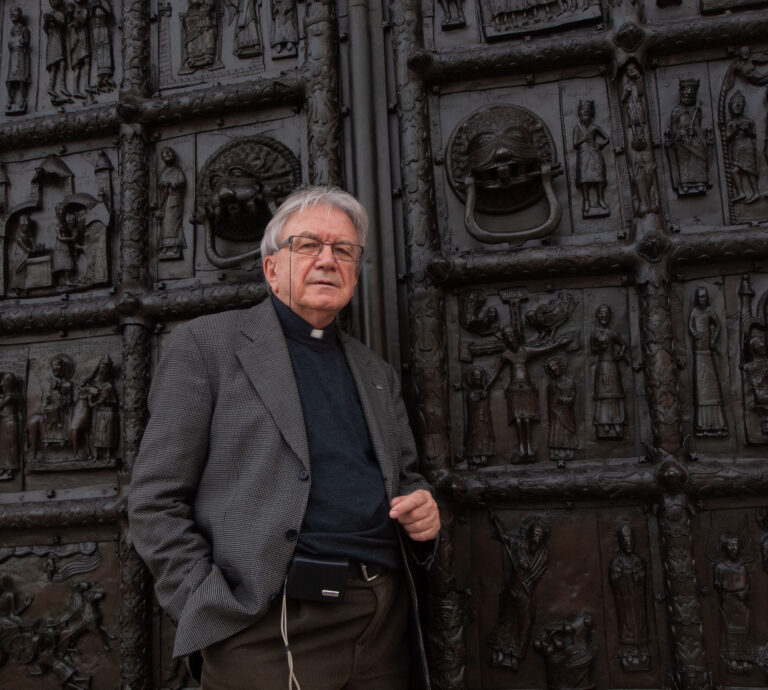
Figurines of bishops and contractors are among the reliefs, to which in the first quarter of the 15th century a representation of a Russian founder, master Abraham, was added. He also adapted the gates to the western portal in the Council of Sofia in Novgorod the Great in Rus, adding Russian inscriptions translated from Latin into Cyrillic. It is hypothetically assumed that the door was looted from Płock at the end of the 13th century and after various fate, it was hung as a “copper icon” in the Orthodox Church at the beginning of the 15th century.
Reconstruction
The reconstruction of the arrangement of the quarters in connection with the articles of faith refers to the ancient Christian tradition, according to which each of the Apostles, before all of them departed for the evangelization mission, delivered one article of faith, which is aptly expressed by the Polish name Apostolic Composition.
To commemorate this fact, from the ninth century the feast of the Departure of the Apostles was celebrated in the universal Church, also known as the feast of the Dispatch of the Apostles (Divisio Apostolorum). The iconography of the Płock Doors sections reminds us of this distant tradition. Here is the gigapixel of the Płock door and a diagram showing the assignment of the plots to the 12 articles of faith of the Apostolic Creed.
Painting
Easel
painting
In the painting department we present only three oil paintings on canvas. Two are closely related to the cathedral, they were displayed in the chapels of the transverse nave (transept) from the end of the 18th century until the beginning of the 20th century. The third one shows the most valuable cathedral treasures in connection with the history of the Chapter of Płock Cathedral.
During the renovation of Płock Cathedral at the beginning of the 20th century, an architect Stefan Szyller designed a new arrangement in the chapels of the transept. In the place of large altar paintings, windows were made, thus restoring the architect’s original plan, the stained glass windows were put in.
In the chapel of The Blessed Sacrament from 1798 a painting entitled The Grief of St. Peter by an unknown artist was located. In 1901 the painting was moved to the Diocesan Museum.
Opposite, in the chapel of St. Zygmunt, the cathedral chapter created an altar to the patron of Płock and in 1792 a painting with the image of the saint was ordered. In 1901 the painting was moved to the Diocesan Museum.
The painting by Jan Czesław Moniuszko, The Emperor Maksymillian I gives the coat of arms to Płock Cathedral Chapter, was created in 1908. It was stolen during the World War II and thanks to the efforts of the Cathedral Chapter it returned in 2016. The Chapter has had a coat of arms for over 500 years. The prominent bishop of Płock Erazm Ciołek receives it from the Emperor Maksymillian, in the painting we can see the most valuable items of the cathedral treasury: the herm and the crosier of bishop Krzycki.

The mystery
and charm of
a colourful play
of lights
The architectural renovation of the cathedral at the beginning of the 20th century was connected with the works on stained glass windows which were to form a whole together with the polychrome.
The largest stained glass window is located in the apse of the presbytery above the altar and it represents the Assumption of the Blessed Virgin Mary. The following show the Annunciation of the Virgin Mary, Mary enthroned with the Child, Mary on the throne and a woman clothed with the sun. In the left side aisle, decorative windows show Queen Jadwiga, St. Andrzej Bobola and St. Pius X. While in the right one we can see St Joseph the Worker, St. Wojciech and St. Jacek Odrowąż. In the left chapel of the transept there is a stained glass window of the Heart of Jesus, and opposite to it St. Zygmunt, patron of Płock. The Sierpski Chapel is decorated with a stained glass window of St. Anthony with Baby Jesus and the Royal Chapel with the Vows of Jan Kazimierz.
Some of the stained glass windows were designed by the author of the polychrome, Władysław Drapiewski. The rest were made in the second half of the 20th century.
Polychrome
Stunning Neo-
Renaissance
polychrome
as decoration
of the cathedral
Płock and its residents pictured on wall decorations.
After the architectural renovation of the cathedral began at the beginning on the 20th century, the creation of polychrome was entrusted to Władysław Drapiewski, who in three stages: before World War I, in the interwar period and after World War II covered the interior of the basilica with Renaissance polychrome using exceptionally durable mineral dyes Keima. The paintings tell the story of the Gospel, show the cult of Mary and prompt reflection on the life of Christ.
The vault of the nave symbolizes the sky. On the walls below, there are six large paintings reminiscent the scenes from the life of Christ. The painting presenting the teaching of Christ on the hill with Płock in the background. The painting decoration in the dome and in the supporting architectural structure presents the activity of the Holy Spirit in the Church. A different content is presented by the polychrome in the chancel, it is dedicated to the cult of the Mother of God.

Treasury
Priceless
handicraft
from the
cathedral
treasury
The crown, reliquaries, liturgical vessels and garments, what is hidden in the cathedral treasury.
The Płock Cathedral, as one of the oldest, has many great monuments of goldsmiths and handicraft works. Originally, they were stored in the cathedral treasury which was located above the Northern sacristy and until the end of the 18th century it belonged to the richest people in Poland. Currently, the collection has been transferred to the nearby Diocese Museum in the post Benedictine abbey and cathedral building which was purposefully erected by the architect during the last reconstruction of the temple.
The most valuable relics of the treasury are: the work of Romanesque goldsmiths in the Middle Ages – silver, gold plated chalice with a paten, founded by Prince Konrad of Mazovia in 1239, hermatic reliquary of St. Zygmunt from 1370 founded by King Kazimierz Wielki, the oldest preserved Polish crown from the 13th century, decorated with sapphires, rubies and pearls, the Czerwińsk tin from about 1180, a set of liturgical garments and a gold chalice from the beginning of the 17th century founded by the bishop Karol Ferdynand Waza.
